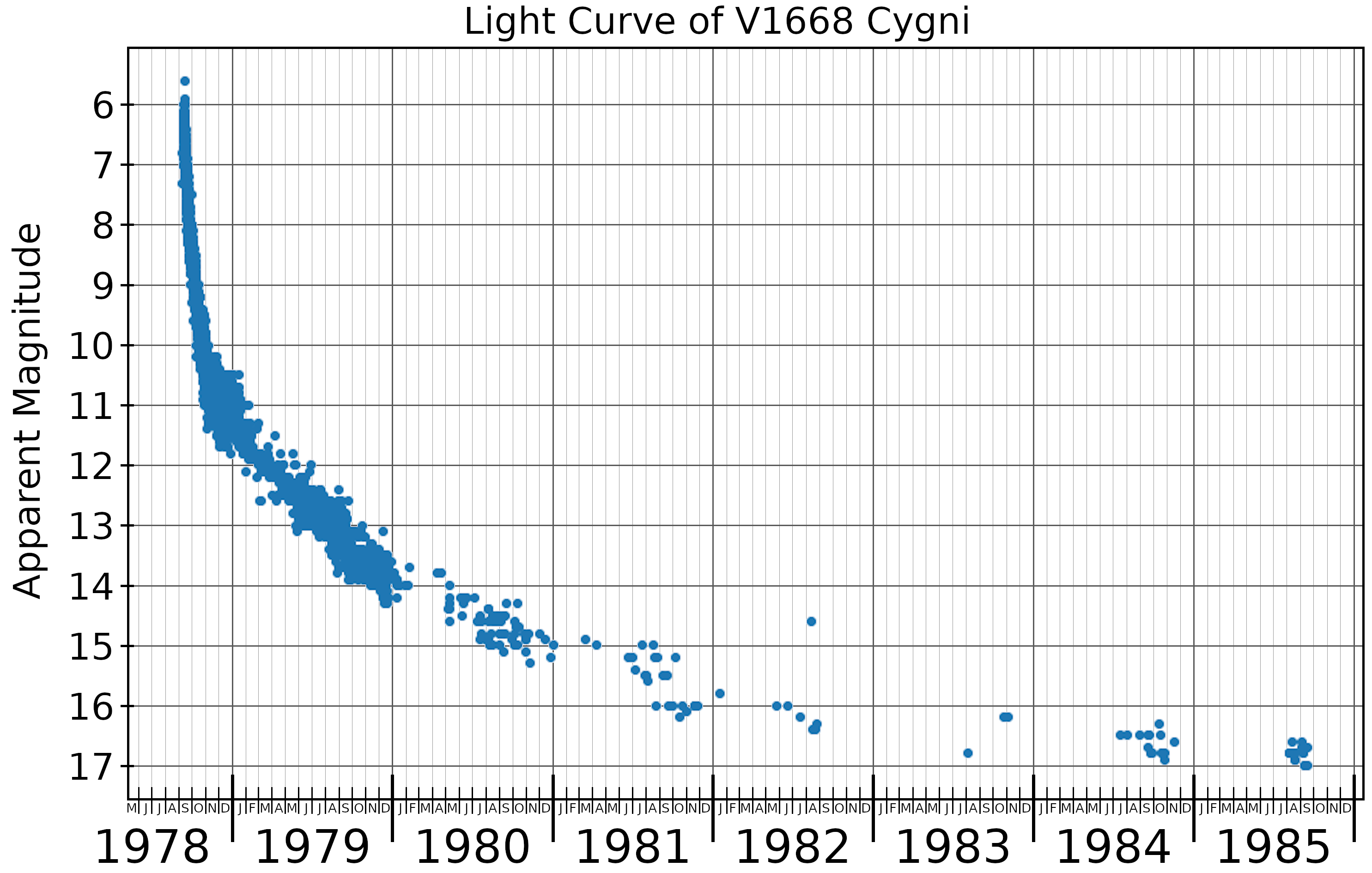V1668 Cygni on:
[Wikipedia]
[Google]
[Amazon]
 V1668 Cygni was a
V1668 Cygni was a
 V1668 Cygni was a
V1668 Cygni was a nova
A nova (plural novae or novas) is a transient astronomical event that causes the sudden appearance of a bright, apparently "new" star (hence the name "nova", which is Latin for "new") that slowly fades over weeks or months. Causes of the dramati ...
that appeared in the northern constellation
A constellation is an area on the celestial sphere in which a group of visible stars forms Asterism (astronomy), a perceived pattern or outline, typically representing an animal, mythological subject, or inanimate object.
The origins of the e ...
of Cygnus, situated a couple of degrees to the southeast of the star Rho Cygni. It was discovered by Canadian variable star observer Warren Morrison on September 10, 1978, and reached a peak brightness of around 6.22 apparent magnitude on September 12. The luminosity of the source at this time was about 100,000 times the brightness of the Sun, and likely remained at that level for several months. The expansion velocity of the nova shell was deduced through spectroscopy to be 1,300 km/s.
After peak brightness, the lightcurve showed a smooth power-law
In statistics, a power law is a functional relationship between two quantities, where a relative change in one quantity results in a proportional relative change in the other quantity, independent of the initial size of those quantities: one qua ...
decline with no major fluctuations. The decline in brightness was rapid, dropping by three magnitudes in 24 days. An optically thin shell of dust was created by the outburst that reached peak opacity after 50–60 days. The lack of a silicate feature in the infrared spectrum of this shell suggests the dust grains consisted of graphite, possibly condensed on atoms of cohenite. A 1994 analysis of the light curve showed the mass of the white dwarf source is about equal to the Sun.
Warren Morrison was awarded the 1979 Ken Chilton prize of the RASC primarily for this discovery.
References
{{Stars of Cygnus Novae Cygnus (constellation) 1978 in science Cygni, V1668